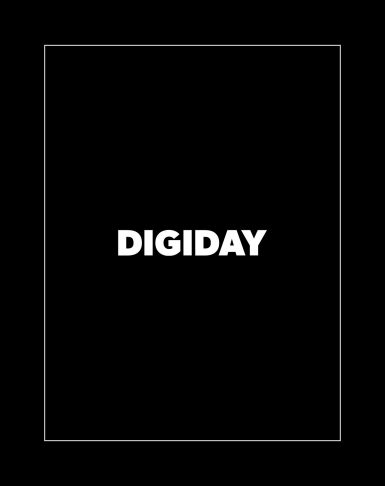Since January, Siegel+Gale has been holding dinners with senior brand leaders across major West Coast cities. Dinner attendees represented the who’s who in tech, financial services, real estate and entertainment.
The purpose of these dinners was to discuss the current economic uncertainties many organizations are facing despite what the economic indicators seem to say. Given these dinners were held across the West Coast, there was a decided bent toward tech and entertainment: two industries recovering from a difficult 2023 due to interest rate hikes, layoffs and strikes. Discussions were candid and too good not to share.
Below are the headlines of what’s on the minds of some of today’s leading brand-builders as they seek to evolve, grow and manage their brands in 2024.
AI: “This is the dumbest it will ever be.”
There wasn’t a single attendee who didn’t have an AI story to share. Every organization is looking at AI, whether casually playing around or aggressively applying it to reduce costs. The stories of lessons learned abound, each brander sharing what not to do when implementing AI. While there are wild swings in the tools and appropriate applications, all attendees agreed that the speed at which AI is improving is profound. The reasons why some organizations hesitate today to adopt it may be the very reasons they won’t in a matter of months. In search of answers, these leaders wanted to know who was doing AI right. Where are its greatest and highest uses? What does a marketing organization that properly uses and governs AI look like? Many great discussions and learnings were shared, yet very few best practices. (At least not yet.)
Trust is under attack
“As we see our institutions under attack and questions of journalistic integrity mounting, how can we, as branders, navigate a world where trust is continually undermined?”
In one of the most serious discussions of our tour, branders reflected on the vulnerability of their future marketing and branding efforts to cut through the ever-growing dysfunction and skepticism of audiences. “Who will believe what we say, and the motives behind it?” asked one attendee. “If institutions like The New York Times are struggling, what’s to say that won’t be us in three years?”
The thought is scary but widely accepted as perhaps one of the branding industry’s most significant challenges. Americans’ ever-increasing cynicism and distrust puts brands in a very different place than five years ago. How do you create authenticity? How do you tap into the power of community and word of mouth? How can you protect yourself from those who wish to challenge the very things on which your brand stakes its reputation? This isn’t something AI can fix. It will require radical shifts in how and where brands tell their stories and, perhaps most importantly, who tells them.
A changing technology industry
“There will never be more people working in technology than there are today,” one attendee said during our San Francisco stop.
If you’ve been following the layoff trackers in the high-tech sector, our guest is likely right. As interest rates rose, organizations asked their marketers to do more with less, leading to a never-ending stream of layoffs and spending reductions from the largest companies to the smallest. The timing of this intersected with the application of AI within tech companies themselves. And, in an ironic turn of fate, the monster many feared would rob other industries of their jobs is now devouring its own. Enterprise-wide mandates to apply AI are seeing tech brands work leaner, rewrite ways of doing business and experiment with how to drive intense growth expectations while also achieving aggressive cost-cutting requirements.
The notion of tech’s shrinking transformation wasn’t just discussed in San Francisco; attendees in Los Angeles and Seattle shared similar observations. What we know for sure is that for many in tech, the bloom is off the rose. It isn’t the same industry it was in 2021, and in many ways, tech is starting to resemble more traditional industries.
What is unique is that there is a fundamental shift in how AI impacts technology brands, employee culture and brand experiences, and real lessons are being learned about what can go right—and what can go terribly wrong. All of this is happening right now, ahead of many other industries. Most brand leaders in tech expect much more of the same in the next two years, making the role of branding as much a corporate policeman as ever before. As organizations weaponize their employees with AI tools, everything from social media, brand and product messaging, design, customer support, email marketing and numerous other brand touchpoints will require obsessive 24/7 monitoring and governance. Most organizations have not considered these things as their executives push forward unrelentingly, obsessed only with AI’s benefits and doing more with less.
DEI will make a comeback
Many attendees expressed disappointment with their organizations’ flagging commitments to DEI endeavors. All believed the internal DEI initiatives activated just a couple of years ago were good for organizational culture, improved recruiting and retention and paid real dividends in terms of creativity and customer experiences. But almost all attendees cited leadership backsliding in this area as an opportunity for renewed focus. Expect increased interest going forward as brands look to reclaim some of the lost ground on their DEI efforts, and become more inclusive places to work and connect with wider arrays of audiences.
Performance-driven marketing is hollowing out brands
“When everything is a conversation focused on a sale, it means it’s not on anything else. And customers get exhausted and turned off!” remarked one attendee.
Universally, our marketers decried the obsession with performance marketing efforts. Comments ranged from an obsession with culling the audiences that already know a brand—to the point of putting them off—to the recognition that performance marketing doesn’t prioritize brand extension into new markets or deepening brand engagement.
All attendees predicted a return to more impactful and emotional brand experiences in the coming years. “Nobody is talking about the top of the funnel, who you’re for, why you’re different and laying the long-term planks of engagement and loyalty. You can only milk a customer for so long before they think it’s simply a transactional relationship.”
Longing for community and human connections
Our last conversation theme centered on searching for more human connections and belonging. Perhaps as COVID’s final chapter, many attendees talked about how their brands were trying to create belonging and connectivity for the people inside their organizations, as well as the customers they engage with. More of a social commentary, with real estate shifts and the need to engage remote employees rising, many attendees noted the disappearance of “third places.” Attendees saw this as a vast brand opportunity to unite people, create genuine engagement and offer an antidote to an AI-obsessed world.
It was an honor and pleasure to spend time with thoughtful, driven, and successful brand leaders. Our conversations were honest and insightful, and all attendees left thinking differently about what the next 12-24 months will look like. While many were dour about what the future holds from an economic standpoint, all felt like the brand challenges they and their peers face are among the most complex and interesting of their tenures.
Jason Cieslak is President, Pacific Rim.


